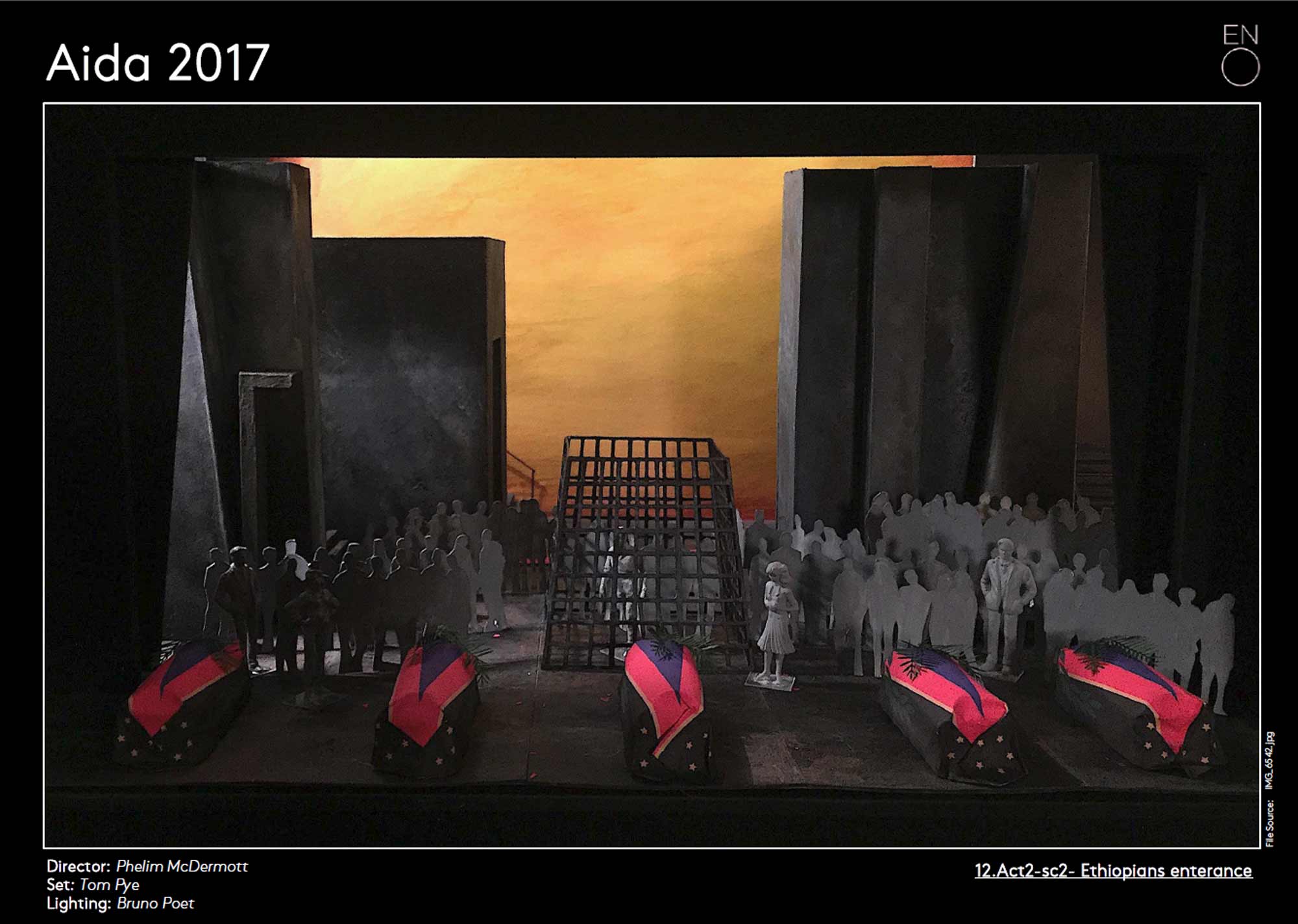The Director
After exploring the world of ancient Egypt in his production of Akhnaten for ENO in 2016, director Phelim McDermott wanted again to create a world on stage that challenged audience expectations of Ancient Egypt.
“What I often see when I look at other productions of Aida is that there is surface and gloss and brightness, but not depth. It sometimes feels like everything’s on show – there’s no mystery, no sense of what’s round the corner or inside the tomb. To make a production that has a charged atmosphere is an interesting challenge.”
Working with the same creative team he worked with on Akhnaten, designer Tom Pye and costume designer Kevin Pollard, McDermott has created a production that invites audiences to reconsider the people and culture of Ancient Egypt and reflect on the contemporary world in which we live in.
“There aren’t many ways in which we can ask ‘how can we talk about how mad the world is at the moment?’ In my hopeful moments, I think opera is one of the ways we can do that.”
This reappraisal involves some bold creative choices that go against ideas seen in traditional stagings of Aida. In the opera’s grand scenes of public display, for example, no large animals or troupes of dancers join the cast, as is so often the choice on other productions. Instead McDermott focuses on the gritty human dramas that play out within the large scenes. In the Triumphal March in Act 2 which celebrates the return of Radames and his Egyptian troupes from battle with the Ethiopians, a procession of coffins replaces the usual procession of animals, with members of the chorus playing the families of the soldiers lost in battle and now venerated as national heroes. Such a staging references modern images of military funerals and the true nature of war, with both sides suffering fatalities.

The white card model for the set design of Aida by Tom Pye for the Triumphal March.
Watch this short video with director Phelim McDermott introducing his production of Aida for ENO.
